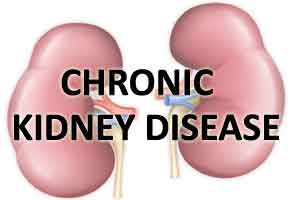- Home
- Editorial
- News
- Practice Guidelines
- Anesthesiology Guidelines
- Cancer Guidelines
- Cardiac Sciences Guidelines
- Critical Care Guidelines
- Dentistry Guidelines
- Dermatology Guidelines
- Diabetes and Endo Guidelines
- Diagnostics Guidelines
- ENT Guidelines
- Featured Practice Guidelines
- Gastroenterology Guidelines
- Geriatrics Guidelines
- Medicine Guidelines
- Nephrology Guidelines
- Neurosciences Guidelines
- Obs and Gynae Guidelines
- Ophthalmology Guidelines
- Orthopaedics Guidelines
- Paediatrics Guidelines
- Psychiatry Guidelines
- Pulmonology Guidelines
- Radiology Guidelines
- Surgery Guidelines
- Urology Guidelines
Mortality doubles in CKD patients due to accompanying Pulmonary Hypertension

A substantial number of patients with CKD develops Pulmonary Hypertension, the mortality rate being twice among those with PH as compared to those without PH, according to a recent study published in Indian Journal of Nephrology.
Pulmonary hypertension (PH) is a condition of increased blood pressure within the arteries of the lungs. Symptoms include shortness of breath, syncope, tiredness, chest pain, swelling of the legs, and a fast heartbeat. It is an overlooked cardiovascular complication of CKD especially in end‑stage renal disease (ESRD). It has prevalence estimates of 30%–50% and is an independent predictor of increased mortality in CKD patient.
Dr.B. S. Arun and his associates conducted a study to analyze the prevalence of PH in patients with CKD, its severity in different stages of CKD, and risk factors for it
One hundred and eight patients with CKD treated at Karnataka Institute of Medical Sciences for six months between January 1, 2014, and June 30, 2015, were included in the study. Clinical evaluation and relevant investigations including echocardiography were done. Follow‑up echocardiography was done at 3 and 6 months and assessed. PH was present in 47 of 108 (43.5%) cases at the beginning, 41 of 83 (491.4%) at 3 months, and 32 of 64 (50%) at 6 months. The prevalence and severity of PH increased with progression of CKD stage, although not statistically significant.
The study found that heart failure with reduced ejection fraction(HFrEF) and heart failure with preserved ejection fraction(HFpEF) was significantly higher among PH group compared to the non‑PH group. Mean hemoglobin in PH group was significantly lower, compared to the non‑PH group. The majority of them had moderate PH at the beginning of the study which remained same, despite being on hemodialysis.
The study concluded that a substantial number of the patients with CKD develops PH. HFrEF and HFpEF are the strongest risk factors. The other factors contributing to it are anemia, volume overload, and increased calcium phosphate product. Thus, PH can be considered as a reflection of cardiorenal syndrome type 4. The other factors contributing to it are anemia, volume overload, and increased calcium phosphate product.
The article was published in Indian Journal of Nephrology.
For more reference log on to 10.4103/ijn.IJN_36_17

Disclaimer: This site is primarily intended for healthcare professionals. Any content/information on this website does not replace the advice of medical and/or health professionals and should not be construed as medical/diagnostic advice/endorsement or prescription. Use of this site is subject to our terms of use, privacy policy, advertisement policy. © 2020 Minerva Medical Treatment Pvt Ltd